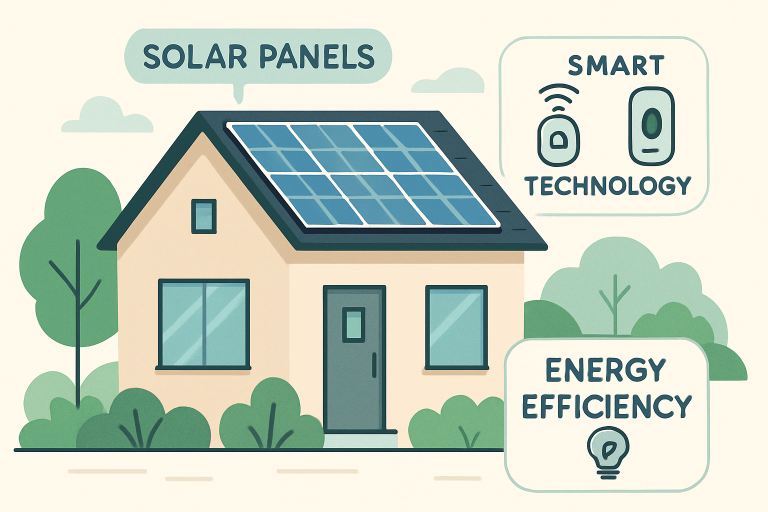Table of Contents
- Introduction
- Smart Home Integration
- Energy-Efficient Designs
- Flexible Living Spaces
- Sustainable Building Materials
- Outdoor Living Areas
- Virtual Staging and Tours
- Community-Focused Developments
- Conclusion
In a rapidly changing real estate market, buyers are no longer content with one-size-fits-all solutions. Instead, they expect their homes to reflect not only their unique lifestyles but also their evolving values. Leading the way in innovative housing options is Park City, UT, real estate agent Richard Taleghani, who has seen firsthand how smart technology, sustainability, and adaptability are now at the heart of the homebuying process. Modern homebuyers are seeking more than size and curb appeal. They prioritize technology, sustainability, adaptability, community, and comfort. From construction to interiors and even virtual viewings, these evolving expectations are becoming essential features in today’s real estate market.
Smart Home Integration
Incorporating smart technology is fast becoming non-negotiable for modern homebuyers. Integrated systems that control lighting, temperature, security, and entertainment through apps or voice assistants are essential for comfort, convenience, and peace of mind. Features like smart doorbells, connected thermostats, and app-monitored security systems are no longer luxuries—they are expected.
Energy-Efficient Designs
Energy efficiency has moved from being a preference to a requirement. Today’s buyers are looking for double or triple-paned windows, solar power systems, high-efficiency appliances, and programmable thermostats. These enhancements lower utility costs, reduce the home’s environmental footprint, and often qualify for government rebates or incentives. According to Energy.gov, designing homes with energy efficiency in mind — such as proper insulation, efficient lighting, and smart HVAC systems — can significantly reduce energy consumption while enhancing comfort. For instance, the use of advanced HVAC systems and smart thermostats can dramatically reduce energy waste, making homes more affordable over the long run and appealing to those who want to make eco-conscious choices.
Flexible Living Spaces
Adaptability inside the home is critical as lifestyles evolve and remote work becomes more prevalent. Buyers are actively seeking open layouts, flex rooms, and features like Murphy beds or movable walls that allow for easy transitions between office, gym, guest quarters, or playroom. Such versatility is essential as families’ needs change, helping homeowners maximize every square foot of their investment. This shift also resonates with multi-generational households and those who value future-proofing their living spaces.
Sustainable Building Materials
More homebuyers are scrutinizing construction materials, seeking homes that use recycled, responsibly sourced, or low-emission components. Options like bamboo flooring, recycled steel, and non-toxic low-VOC paints are not only good for the environment but also contribute to better indoor air quality and overall wellness. According to Architectural Digest, homes built with eco-friendly materials appeal to a growing segment that wants lasting value alongside health benefits. This approach also signals a larger shift toward responsible, transparent development practices.
Outdoor Living Areas
Having usable outdoor spaces is a priority for buyers seeking a blend of nature and comfort. Features such as landscaped gardens, patios, rooftops, and balconies are now top-selling points. These elements provide a private oasis, increase usable living area, and support wellness with a direct connection to the outdoors. Research has shown that access to green spaces not only enhances property values but also supports healthier, happier living. For instance, studies have shown that properties adjacent to natural parks and recreational greenways often see price increases of up to 20%, benefiting both homeowners and local governments.
Virtual Staging and Tours
Remote home shopping is here to stay thanks to the rise of virtual staging, video tours, and 3D walkthroughs. Sophisticated digital tools let buyers explore multiple properties at their own pace, comparing layouts and finishes without ever stepping inside. This technology streamlines the search process, caters to long-distance buyers, and enables sellers to showcase homes in their best light. High-quality virtual experiences now set the standard for property marketing, making the buying and selling process more efficient and accessible for everyone.
Community-Focused Developments
Homebuyers today increasingly view community as an essential component of the perfect home. Developments that foster connection through shared amenities such as clubhouses, pools, trails, dog parks, or coworking lounges are more desirable than ever. Proximity to local shops, schools, and social hubs, along with a walkable layout, can influence purchase decisions as much as the home itself. This trend highlights how a sense of belonging and neighborhood inclusion are vital for overall satisfaction and well-being.
Conclusion
The modern real estate landscape is marked by innovation, flexibility, and a commitment to sustainability and community. As the expectations of today’s homebuyers evolve, so too do the solutions offered by builders, developers, and real estate professionals. From smart technology and energy-saving features to adaptable layouts and eco-friendly materials, today’s homes are being designed for how people genuinely want to live—connected, empowered, and engaged.






